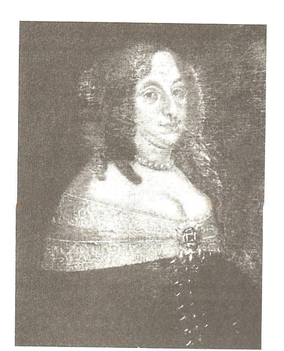
New Sweden was a colony of the Swedish Empire along the lower reaches of the Delaware River between 1638 and 1655 in present-day Delaware, Maryland, New Jersey, and Pennsylvania in the United States. Established during the Thirty Years' War when Sweden was a great power, New Sweden formed part of the Swedish efforts to colonize the Americas.

The Delaware Colony, officially known as the three "Lower Counties on the Delaware", was a semiautonomous region of the proprietary Province of Pennsylvania and a de facto British colony in North America. Although not royally sanctioned, Delaware consisted of the three counties on the west bank of the Delaware River Bay.

Johan Classon Risingh was the last governor of the Swedish colony of New Sweden.
Peter Hollander Ridder (1608–1692) was the governor of the Swedish colony of New Sweden from 1640 until 1643.

Fort Nya Elfsborg was a fortification and settlement established as a part of New Sweden. Built in 1643 and named after the Älvsborg Fortress off Gothenburg, Fort Nya Elfsborg was located on the New Jersey side of the Delaware River, between present day Salem and Alloway Creek.

Johan Björnsson Printz was governor from 1643 until 1653 of the Swedish colony of New Sweden on the Delaware River in North America.
The history of Delaware as a political entity dates back to the early colonization of North America by European settlers. Delaware is made up of three counties established in 1638, before the time of William Penn. Each county had its own settlement history. The state's early colonists tended to identify more closely with their county than Delaware as a whole. Large parts of southern and western Delaware were thought to have been in Maryland until 1767. The state has existed in the wide economic and political circle of the nearby Pennsylvanian city of Philadelphia.
Måns Andersson, was a pioneer in the Swedish colony of New Sweden.
Måns Nilsson Kling or Mauno Kling was the second governor of the 17th century colony of New Sweden, which he administrated from Fort Christina, now Wilmington, Delaware, United States.

The Printzhof, located in Governor Printz Park in Essington, Pennsylvania, was the home of Johan Björnsson Printz, governor of New Sweden.

New Netherland, or Nieuw-Nederland in Dutch, was the 17th century colony of the Republic of the Seven United Netherlands on the northeastern coast of North America. The claimed territory included southern Cape Cod to parts of the Delmarva Peninsula. Settled areas are now part of the Mid-Atlantic states of New York, New Jersey, Connecticut, Delaware and Pennsylvania. Its capital, New Amsterdam, was located at the southern tip of the island of Manhattan on Upper New York Bay.

Olof Persson Stille (1610–1684) was a pioneer settler of New Sweden, a colony along the lower reaches of the Delaware River in North America claimed by Sweden from 1638 to 1655. Stille served as the first chief justice of the Upland Court, the governing body of the New Sweden colony following Dutch West India Company annexation from Swedish colonial rule.
Laurentius Carels (1624–1688) was one of the first settlers of Delaware County, Pennsylvania and one of the first Swedish Lutheran clergyman in New Sweden. As was typical among Swedish ministers, he generally used a Latinized version of his name Laurentius Caroli Lockenius. He is listed in historical records under several different names, most commonly as Lars Carlsson Lock.

Great Minquas Path was a 17th-century trade route that ran through southeastern Pennsylvania from the Susquehanna River, near Conestoga, to the Schuylkill River, opposite Philadelphia. The 80-mile (130 km) east-west trail was the primary route for fur trading with the Minquas people. Dutch, Swedish and English settlers fought one another for control of it.

Armegot Printz (1625–1695) was a Swedish noble. She was the daughter of Johan Björnsson Printz, governor of New Sweden, and she married her father's successor, governor Johan Papegoja. She is the most well documented and known woman of New Sweden.
Israel Helm was a colonist and soldier in New Sweden who became one of the first settlers in the area of Philadelphia, PA.

Andries Hudde (1608–1663) was a landowner and colonial official of New Netherland.
Hans Månsson (1612–1691) was a Swedish soldier and a convicted criminal who was sent to New Sweden along the lower reaches of the Delaware River in what is now the United States in 1641. After serving six years on a tobacco plantation, he was freed and became a respected leader in Dutch New Netherland, serving as a spokesman for the settlers, and as commanding officer of the militia at Wicaco. He purchased land and was one of the first European settlers in what is now New Jersey.

In September 1655, Dutch soldiers from New Netherland under the command of Peter Stuyvesant conquered the Delaware River colony of New Sweden. Under the terms of surrender the Swedish settlements were incorporated into the Dutch colony.
The Revolt of the Long Swede also known as the Intended Insurrection of the Long Swede, the Insurrection in Delaware, the Uproar Among the Swedes, and the Long Finn Rebellion, was an attempted uprising of the population of the former Swedish colony of New Sweden against the British.











